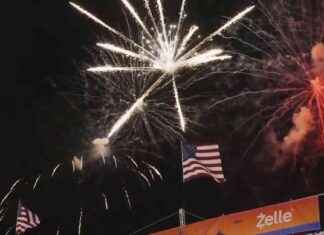The Berlin Art Week (BAW), a contemporary art week that involves almost all the museums, foundations and fairs in the German capital with activity in the sector, unfolds this year an allegation against the gentrification of global cities. The BAW is by nature a decentralized event, but the organizers of this edition – which started yesterday and ends this Sunday – have located a center as a headquarters in the Uferhallen of the multicultural neighborhood of Wedding, in order to send a message.
The Uferhallen, former depots and facilities of the Berlin public tram service between 1873 and 2007, were sold that year by the City Council to a cultural company. Since then, they have housed workshops, studios and a community space, in which 150 artists currently work. In 2017, this 18,000-square-meter piece of land was acquired by the Marema real estate company, which plans to build luxury flats and offices, to be embedded among the listed buildings, which will continue to be protected.
The artists of this nursery fear the worst. “The promoters have said that we can stay in some areas, but we are wary,” says Peter Dobroschke, an artist with a permanent studio for ten years, turned activist. Of course, Berlin needs more flats, but it also needs to preserve its cultural world. And this will not be social housing, it is 200 luxury apartments, prices will rise in the neighborhood”.
The creators who work in the Uferhallen are delighted that the BAW has chosen them as their main venue. On its large railway roof surfaces, the collective exhibition On equal terms is displayed for the occasion, dedicated precisely to highlighting the impact of gentrification on artists and their works. “We observe the very strong, sometimes exhausting effects that the defense of workshops in places threatened with disappearance has on the language, self-perception and forms of action of artists”, explain the curators, Sophia Gräfe and Arkadij Koscheew.
But the Berlin Art Week, which brings together a thousand artists of various nationalities who present works commissioned for the occasion, apart from the gallery owners of the Positions fair, offers many other topics for debate, such as the relationship between art, science and technology.
Thus, the anatomical theater of animals, an 18th-century Prussian building on the Humboldt University campus, houses the virtual reality project The Maw Of (the jaws of) by the American Rachel Rossin, commissioned by the KW Institute of Contemporary Art . “I explore the interplay between flesh, machine, cognition and code that is sparked by current brain-computer interface research,” explains Rossin.
Another example of this line is seen in the Schering Stiftung, a foundation that promotes dialogue between art and science. This is Stellar Nursery (stellar nursery), by the Finnish Jenna Sutela, who with videos and liquid installations explores science and poetry around human milk.








